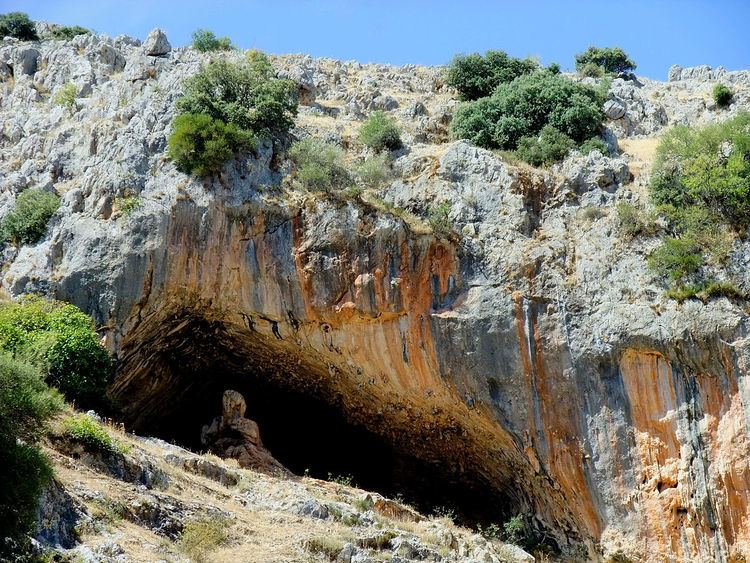Length 2,000 m Phone +34 957 69 45 45 Discovery 1868 | Province Province of Córdoba Geology Cave | |
 | ||
Similar Las Caldas cave, Pettakere cave, Cave of Altxerri, Cueva de la Pileta, Gatecliff Rockshelter | ||
Goa lawah o la cueva de los murci lagos
The Cueva de los Murciélagos is a cave system in the Sierras Subbéticas located about four km southeast of the town of Zuheros in the southern province of Córdoba in Spain. Although the caves were discovered in 1868, they were not studied until 1938. The caves host one of the largest bat colonies in Andalusia.
Contents
- Goa lawah o la cueva de los murci lagos
- La cueva de los murci lagos en metztitl n hidalgo
- Location and formation
- History
- References
La cueva de los murci lagos en metztitl n hidalgo
Location and formation
The caves are located in an extensive karst landscape at an altitude of 980 metres in the heart of the Cañada de Malos Vientos mountain (1000 m) in southern Andalusia. The rock formations and caves with stalactites, stalagmites and subterranean lakes were formed due to weathering and leaching of carbonate rocks. The caves have a total length of 2,000 metres, of which only 450 metres can be accessed.
History
Speleologists discovered tombs from the middle Paleolithic period, which show evidence of human occupation of the caves 35,000 years ago. According to the Carbon-14 dating method, finds from the Neolithic period have an age from 4,300 to 3,980 BC. The researchers reconstructed the lives of people whose artefacts were found preferentially at the cave entrance. Here they cooked their meals on an open firepit. Their diet consisted of the meat of wild and farm animals and various cereals. They used tools created of flint and bones, in order to cut leather. They manufactured red painted vessels, as well as necklaces and bracelets made of sea shells, which they probably acquired through trade with coastal residents. Apparently, the group was on the transition from a live as hunter-gatherers to a live as farmers, who cultivated crops and bred domestic animals.
On various walls there are cave paintings which show depictions of goats, of an eye, and of several human figures. The drawings are dated from the Neolithic period (6000-3000 BC) and the bronze age (3000-2000 BC).
